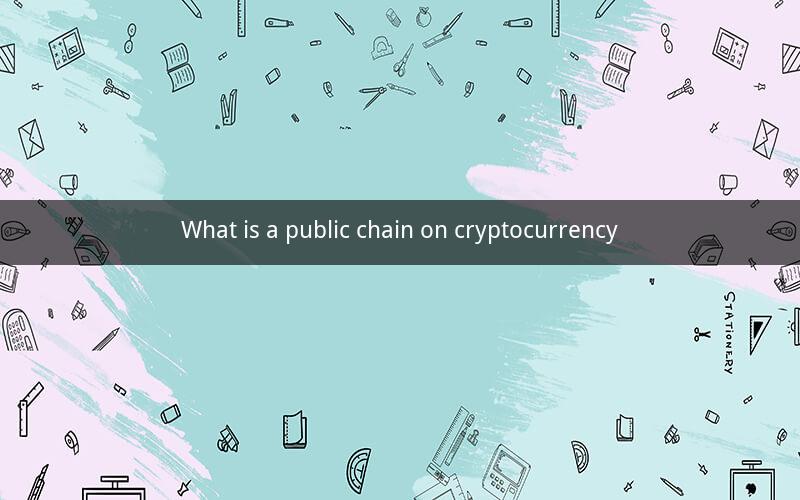
Directory
1. Understanding Cryptocurrency
2. The Concept of a Blockchain
3. Evolution of Blockchain Technology
4. Public Chain: Definition and Characteristics
5. How Public Chains Work
6. The Role of Decentralization in Public Chains
7. Examples of Public Chains
8. Benefits and Challenges of Public Chains
9. The Future of Public Chains
10. Conclusion
1. Understanding Cryptocurrency
Cryptocurrency is a digital or virtual form of currency that uses cryptography for security. Unlike traditional fiat currencies, cryptocurrencies operate independently of a central authority, such as a government or financial institution. The most well-known cryptocurrency is Bitcoin, which was created in 2009.
2. The Concept of a Blockchain
At the heart of every cryptocurrency is a technology called blockchain. A blockchain is a decentralized ledger that records transactions across many computers so that the record cannot be altered retroactively without the alteration of all subsequent blocks and the consensus of the network. This ensures the integrity and security of the data.
3. Evolution of Blockchain Technology
Blockchain technology has evolved from a simple ledger system to a complex network of interconnected nodes. The first iteration of blockchain was Bitcoin's blockchain, which was purely for recording transactions. Over time, other cryptocurrencies emerged, each with its own unique blockchain and features.
4. Public Chain: Definition and Characteristics
A public chain is a type of blockchain that is open to anyone to join. It is not controlled by any single entity and operates on a decentralized network. Public chains are characterized by the following:
- Open Access: Anyone can join the network and participate in the consensus process.
- Decentralization: There is no central authority controlling the network.
- Transparency: All transactions are recorded on the blockchain and can be viewed by anyone.
- Immutability: Once a transaction is recorded, it cannot be altered.
5. How Public Chains Work
Public chains operate through a consensus mechanism, which is a process by which the network agrees on the validity of transactions. There are several types of consensus mechanisms, including Proof of Work (PoW) and Proof of Stake (PoS). PoW is the mechanism used by Bitcoin, where miners compete to solve complex mathematical puzzles to validate transactions. PoS, on the other hand, is a more energy-efficient mechanism where validators are chosen based on their stake in the cryptocurrency.
6. The Role of Decentralization in Public Chains
Decentralization is a fundamental aspect of public chains. It ensures that no single entity has control over the network, making it resistant to censorship and manipulation. Decentralization also promotes transparency and trust among participants, as everyone has access to the same information.
7. Examples of Public Chains
Some of the most popular public chains include:
- Bitcoin: The first and most well-known cryptocurrency.
- Ethereum: A blockchain platform that enables the creation of decentralized applications (DApps) and smart contracts.
- Litecoin: A cryptocurrency that is similar to Bitcoin but with faster transaction times.
- Ripple: A cryptocurrency designed for financial transactions, particularly international remittances.
8. Benefits and Challenges of Public Chains
Benefits:
- Security: Public chains are secure due to their decentralized nature and consensus mechanisms.
- Transparency: All transactions are recorded on the blockchain, making it transparent and verifiable.
- Innovation: Public chains enable the development of new technologies and applications.
Challenges:
- Scalability: Public chains often face scalability issues, which can lead to high transaction fees and slow confirmation times.
- Energy Consumption: PoW-based public chains, like Bitcoin, consume a significant amount of energy.
- Regulatory Hurdles: Public chains may face regulatory challenges in different jurisdictions.
9. The Future of Public Chains
The future of public chains looks promising, with ongoing research and development aimed at addressing current challenges. Innovations such as sharding, sidechains, and layer 2 solutions are being explored to improve scalability and efficiency. Additionally, the integration of public chains with traditional financial systems is expected to increase, further expanding the adoption of cryptocurrencies.
10. Conclusion
Public chains are a revolutionary technology that has the potential to transform various industries. With their decentralized nature, security, and transparency, public chains offer a new paradigm for digital transactions and applications. As the technology continues to evolve, it is likely that public chains will play an increasingly significant role in the future of finance and beyond.
---
Questions and Answers
1. What is the main difference between a public chain and a private chain?
- Public chains are open to anyone, while private chains are restricted to a specific group of users.
2. How does a public chain ensure the security of transactions?
- Public chains use cryptographic algorithms and consensus mechanisms to ensure the security of transactions.
3. What is the role of miners in a public chain like Bitcoin?
- Miners validate transactions and add them to the blockchain, earning rewards in the form of cryptocurrency.
4. Can a public chain be hacked?
- While public chains are secure, they are not immune to attacks. However, the decentralized nature of public chains makes them more resilient to hacking attempts.
5. How does Ethereum differ from Bitcoin?
- Ethereum is a blockchain platform that supports smart contracts, while Bitcoin is primarily a digital currency.
6. What is a decentralized application (DApp)?
- A DApp is an application that runs on a decentralized network, typically a public blockchain, and operates without a central authority.
7. Why is energy consumption a concern for PoW-based public chains?
- PoW requires a significant amount of computational power, which consumes a lot of electricity.
8. How do sidechains enhance the scalability of public chains?
- Sidechains allow for off-chain transactions, reducing the load on the main blockchain and improving scalability.
9. What are the potential regulatory challenges for public chains?
- Public chains may face regulatory challenges related to financial transactions, money laundering, and data protection.
10. How might public chains impact traditional banking systems?
- Public chains could potentially disrupt traditional banking systems by offering faster, cheaper, and more secure transactions.